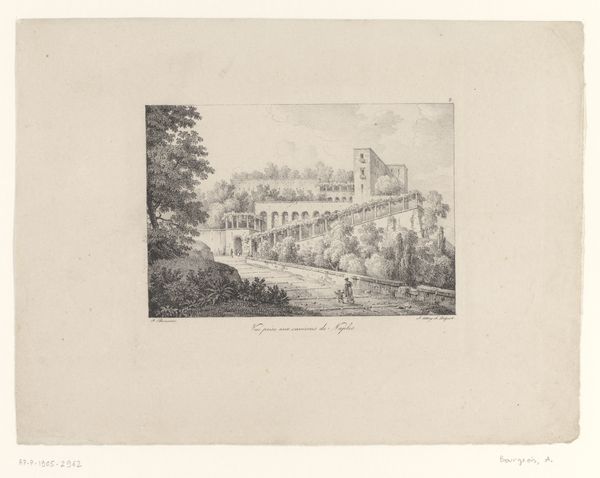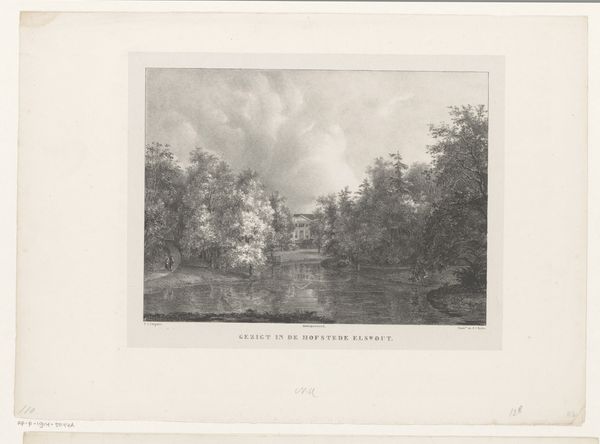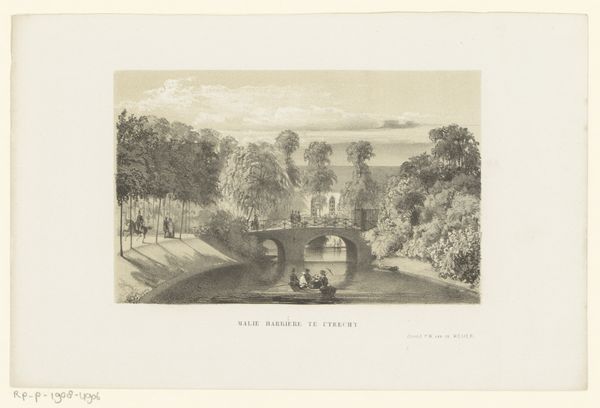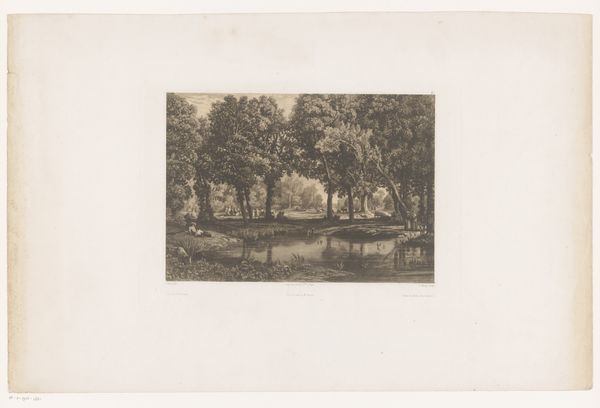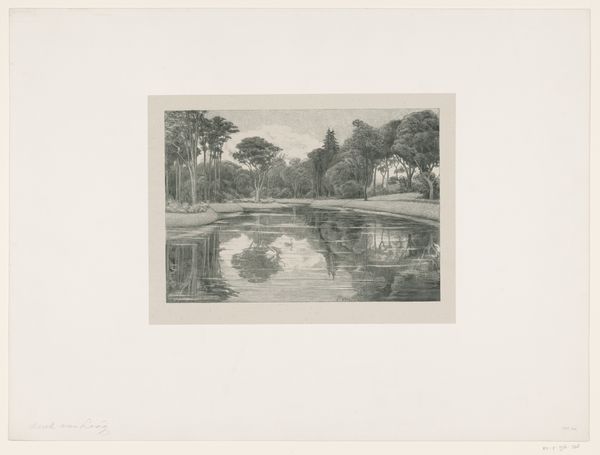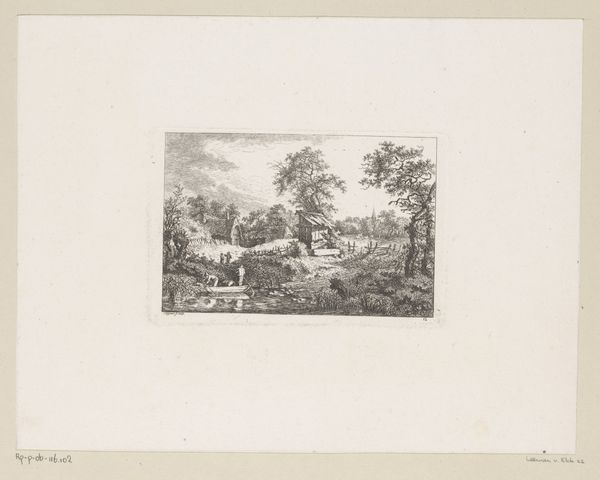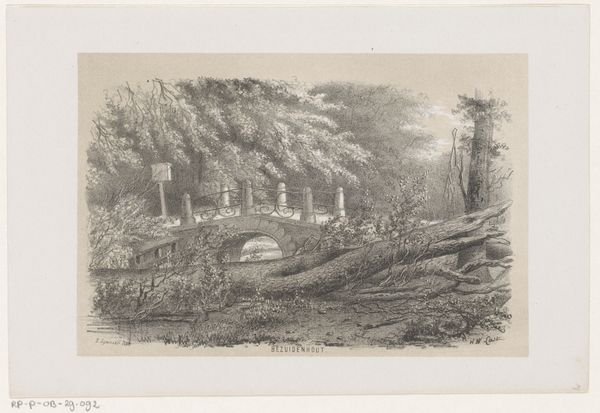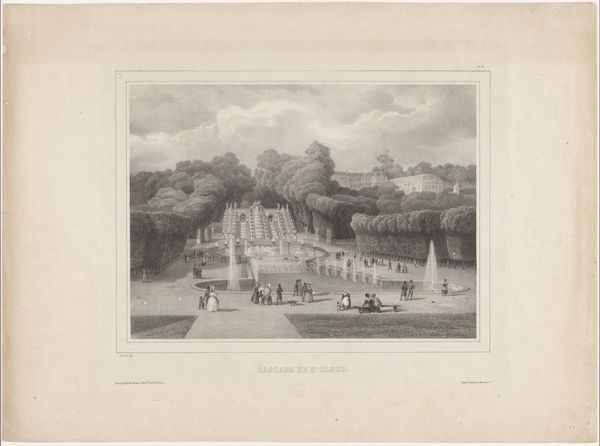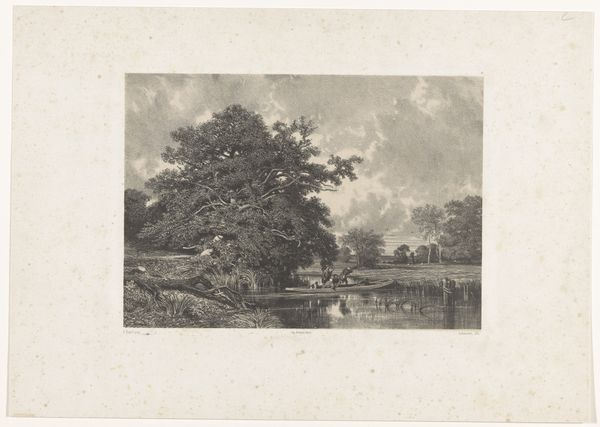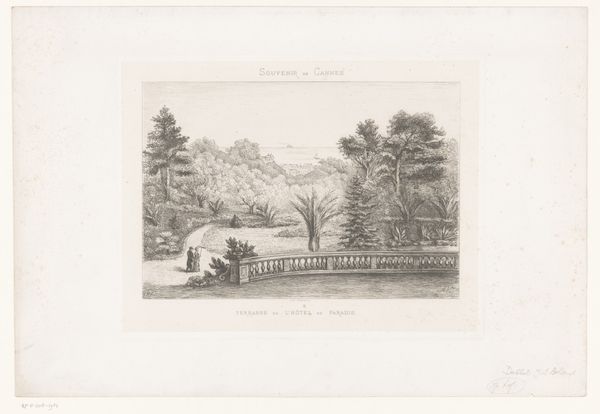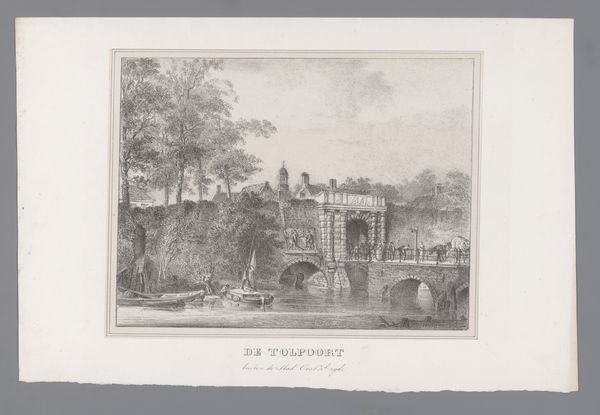
print, etching, engraving
# print
#
etching
#
landscape
#
romanticism
#
15_18th-century
#
cityscape
#
engraving
#
watercolor
Dimensions: height 229 mm, width 279 mm
Copyright: Rijks Museum: Open Domain
Editor: Here we have "Gezicht op Balgonie Castle", an etching and engraving from 1801 by James Fittler. I’m struck by the way the imposing castle in the background contrasts with the small figures on the bridge. What does this composition suggest to you? Curator: That contrast is key. These kinds of landscape prints gained popularity at a time of great social change. Think of the rise of the middle class and the decline of feudalism. How does portraying the castle, a symbol of power, in the distance, while ordinary people occupy the foreground, reflect these shifts in power dynamics? Editor: So, it's not just a pretty picture but a statement about a changing society? Curator: Precisely. Also, consider the Romantic movement at the time. They were fascinated by ruins and nature reclaiming civilization. This image uses landscape and architecture to communicate about history. Notice how nature almost obscures the castle. Editor: It's as if nature is encroaching on human dominance, reflecting on mortality, perhaps? What do you think about the public role of a work like this, beyond just being aesthetically pleasing? Curator: These prints were widely circulated. They shaped public perceptions of history and national identity. Depicting Scotland’s past in this picturesque way can foster pride, while also perhaps romanticizing a hierarchical past in ways that are politically conservative. Who has access to this image and who does it benefit? That's always my question. Editor: That’s a lot to consider. I thought I was just looking at a landscape, but it is interesting to realize that images like this carry such strong social and political weight. Curator: Indeed! Looking closely, it opens up a whole new perspective on the politics of imagery.
Comments
No comments
Be the first to comment and join the conversation on the ultimate creative platform.
